Your spinning reel is a vital part of your fishing gear but understanding all of its parts and how it works can be tricky to wrap your head around.
This can be an issue not only when it comes to using your spinning reel, but when looking to buy one.
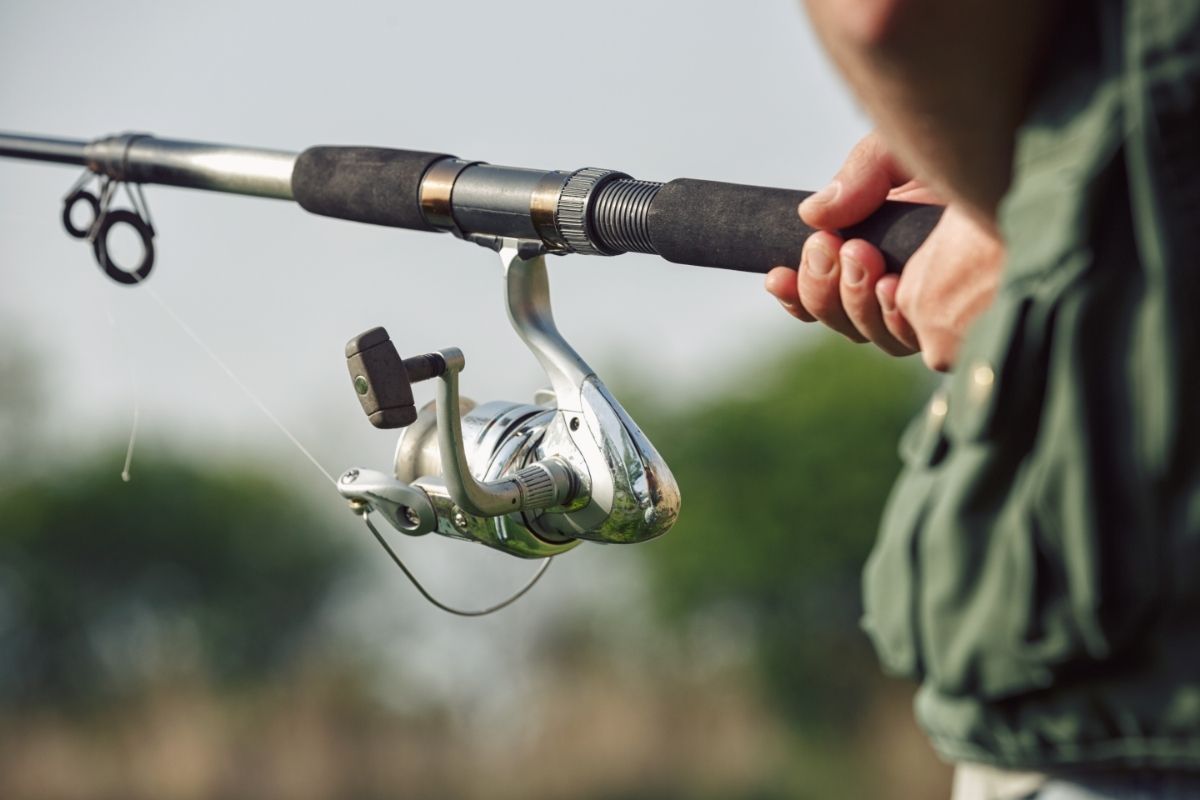
Not understanding all the intricate parts of a spinning reel and what condition they should be in, leaving you vulnerable of being taken advantage of and ending up spending your hard-earned cash on a useless spinning reel.
So, if you want to learn more about spinning reels and how they function, then this is the place for you.
This way, you can get the best spinning reel out of your money and notice when it’s time to start looking for a new one.
What Is A Spinning Reel?
A spinning reel is a type of open face fishing reel that uses a fixed spool to hold the line that you use to fish with.
A spinning reel also features a metal arm that you use to wind in the line onto the spool. This is done by turning the handle, which is a revolving metal arm attached to the reel.
When you cast your fishing line, the arm is disengaged to allow the line to release from the spool, allowing your line to then be pulled by the lure or rig you have tied to it.
Spinning reels are attached to spinning rods and must be positioned facing downwards in order to be used properly. Unlike a baitcasting reel, it should hang underneath the rod handle.
They are very advantageous reels to use, making them popular with lots of different anglers, because they are lightweight and easy to use.
They are great for fishing in freshwater and saltwater, can be used by baitcasters and spin casters, bobber fishing, ice fishing, fishing with rigs, etc.
This makes spinning reels an all round type of fishing reel used by many due to their versatility.
However, spinning reels are not ideal for heavy casting, heavy trolling, or fly-fishing.
This is because spinning reels have a very small spool size and cannot fit the right kind of spool and heavy line needed for these kinds of fishing.
Despite this, spinning reels are great to use for lots of other forms of fishing and their easy functionality makes them a great choice for beginners.
Parts Of A Spinning Reel
A single spinning reel is made up of a lot of different parts and components so it’s important for you to be aware of all of its most important parts. Such parts include the:
- Handle
- Spool
- Body
- Foot
- Bail Arm
- Line Roller
- Drag Adjustment Knob
- Anti-Reverse Switch
These are all the external parts of a spinning reel that are each very easy to identify.
The handle is the extension that you turn and rotate to retrieve your line after casting.
The foot is the T bone shaped end that connects to the rod and the body is the housing section of the reel that connects the two together along with the spool.
The spool is the part that holds your fishing line and at the end of the spool, you will find the drag adjustment knob.
From there, a long thin protrusion that is the bail arm which prevents the line from winding.
The line roller is just underneath the spool and the anti-reverse switch can be found towards the back of the body, near the end of the foot.
However, while you are probably more familiar with these parts of the spinning reel, it is the internal parts that most anglers fail to understand.
These internal parts of a spinning reel include the:
- Ball Bearings
- Drag System
- Gear Box
Let’s take a closer look at each internal part so you understand their function and location.
Ball Bearings
Ball bearings can be found within the housing of a spinning reel and play an important part in its function.
They help reduce rotational friction which in turn helps stabilize the rotation when reeling in your line. This makes the action a lot smoother and less of a struggle.
Drag System
This part of a spinning reel allows you to adjust the pressure on the line spool.
This comes in handy when you are battling a fish and trying to reel it in by modulating the line pressure, allowing the fish to pull the line to help reduce the chances of it escaping.
Without an efficient drag system, you are putting your line at risk. Not only could your line break but it could get stuck, or releases too early and makes hooking a lot more difficult.
Gear Box
The gear box can be found inside the body of your spinning reel as it is connected to both the handle and spindle.
It is supposed to amplify the number of spindle rotations with each handle rotation. This helps to reel in your line faster and smoother.
Buyer’s Guide To Spinning Reels

So now you know how to check a spinning reel for all its external parts and what should be visually present when checking over a potential purchase, but here are some other factors you should consider when searching for your ideal spinning reel.
Of course, you want a spinning reel that is a good quality , but apart from seeing if there are parts missing from a spinning reel, what else separates the good spinning reels from the bad ones?
Here is our buyer’s guide to spinning reels so you can keep all of these things in mind when it comes to buying a brand-new spinning reel for yourself.
Materials
When searching for the best spinning reel, you will want to get one that is very light and strong.
The key to both these features comes down to the materials used to make the spinning reel as some metals are obviously lighter or more brittle than others.
Most spinning reels are made of aluminum, graphite, or a combination of both.
This is because aluminum is a very sturdy metal and resistant to damage from impacts, but is the heavier material of the two.
However, while graphite is lighter than aluminum, it is more brittle.
Some manufacturers use both aluminum and graphite to make their spinning reels to balance the weight of the spinning reel with its durability, so certain parts will be made of aluminum to make it stronger but other parts will be made from graphite to keep the weight of the spinning reel low.
For example, the body may be made of aluminum but the spool will be made of graphite as it is lighter and the line won’t slide as much as with an aluminum spool.
Overall, you will probably want a lighter spinning reel because in most fishing, lightness helps out in the process of casting and reeling.
Because of this, weight is a very important factor to take into consideration when out shopping for a new spinning reel.
Think about what kind of fishing you will use the spinning reel for and if its weight will seriously impact your results and experience.
Gear Ratio
A feature that makes spinning reels so unique is how they feature a fixed spool and the bail rotates around it when you turn the handle.
On other reels like baitcasting reels, the spool rotates with the handle, but on a spinning reel, it is the bail that rotates instead.
Because of this, it’s important to pay attention to the gear ratio of your spinning reel as it affects the performance of the spool and bail.
Your ideal gear ratio heavily depends on the kind of fishing you will be using your spinning reel for. A 4:1 ratio is slow and better suited for a short length of line.
This can come in handy when fishing for larger game as it is a more powerful ratio. However, a 7:1 ratio is much faster and better suited for lure retrieval.
There is a medium ratio of 5:1 which gives you the best of both a 4:1 and a 7:1 so if you plan on trying out lots of different styles of fishing, this might be the best gear ratio for you.
Reel Handle Quality
The handle is one of the most important parts of a spinning reel as slipping and poor grip control can lead to losing your fish.
So, look out for a reel with a larger knob which allows you to hold a firmer grip on it and decreases the chances of you losing control while reeling a fish in.
A longer handle also gives you more leverage than a short handle, plus the handle should be a comfortable size to fit your hand.
It’s a pretty basic feature that a lot of anglers often overlook, so don’t get caught out and try turning the handle to see how you like the feel of the handle.
Ball Bearings
And finally, we come to the bearing balls.
We mentioned earlier how they are important for making the spinning reel so much smoother when it comes to functionality, so you will want to make sure you choose a spinning reel with plenty of ball bearings.
The general rule is that the more ball bearings your spinner has, the smoother it will be but this will also drive the price of your spinning reel up too.
Look for a spinning reel with around 4 or 5 ball bearings so you can enjoy a smooth operating spinning reel and say goodbye to jerky and awkward line retrieval.
Conclusion
Now that you know all about the features of a good spinning reel, you have everything you need to start looking for the perfect spinning reel for yourself.
Remember, there isn’t just one type of spinning reel that fits every fisherman and their needs.
So, before buying, think about what kind of fishing style you prefer and what kind of fishing you plan on doing with your new spinning reel.
This way you can find the right spinning reel for you and avoid getting stuck with something that doesn’t suit you at all.
- Do You Need An Indicator For Nymph Fishing? - November 16, 2023
- Fishing Safety Tips For Families - September 25, 2023
- What Is The Best Time To Night Fish At A Lake? - September 18, 2023


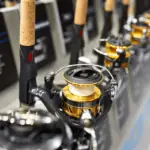
![Kayak Fishing for Beginners [10 Tips for a Successful Trip] fishing kayak moored on a beach](https://irvinelake.net/wp-content/uploads/2022/12/kayak-fishing-for-beginners-150x150.png)
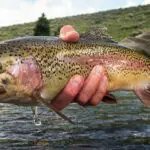
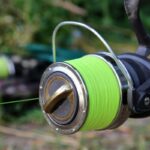
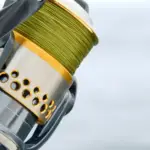
![Fly Fishing for Beginners [Ultimate Guide to Catching Fish] fly fishing for beginners](https://irvinelake.net/wp-content/uploads/2022/11/fly-fishing-man-150x150.png)

